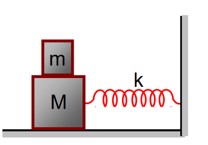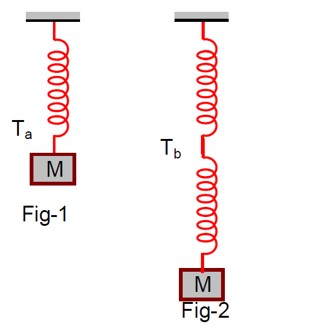14.1 Which of the following examples represent periodic motion?
(a) A swimmer completing one (return) trip from one bank of a river to the other and back
(b) A freely suspended bar magnet displaced from its N-S direction and released
(c) A hydrogen molecule rotating about its centre of mass
(d) An arrow released from a bow
14.1 Which of the following examples represent periodic motion?
(a) A swimmer completing one (return) trip from one bank of a river to the other and back
(b) A freely suspended bar magnet displaced from its N-S direction and released
(c) A hydrogen molecule rotating about its centre of mass
(d) An arrow released from a bow
-
1 Answer
-
(a) The swimmer's motion is not periodic. The motion of the swimmer between the banks of a river is back and forth. However, it does not have a definite period. This is because the time taken by the swimmer during his back and forth journey may not be the same.
(b) The motion of a freely-suspended magnet, if displaced from its N-S direction and released, is periodic. This is because the magnet oscillates about its position with a definite period of time.
(c) When a hydrogen molecule rotates about its centre of mass, it comes to the same position again and again, after an equal interval of time. Such motion is periodic.
&nbs
...more
Similar Questions for you
Velocity of block in equilibrium, in first case,
Velocity of block in equilibrium, is second case,
From conservation of momentum,
Mv = (M + m) v’
f? = 300 Hz
3rd overtone = 7f? = 2100 Hz
Kindly consider the following figure
K = U
½ mω² (A² - x²) = ½ mω²x²
A² - x² = x²
A² = 2x²
x = ± A/√2
Taking an Exam? Selecting a College?
Get authentic answers from experts, students and alumni that you won't find anywhere else
Sign Up on ShikshaOn Shiksha, get access to
- 65k Colleges
- 1.2k Exams
- 679k Reviews
- 1800k Answers


